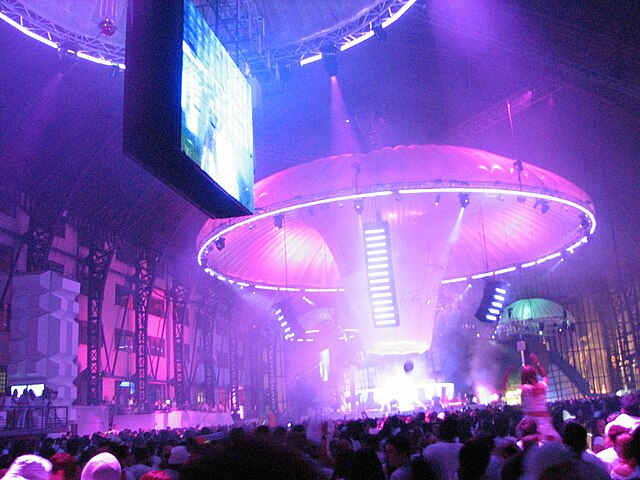A rave is a dance party at a warehouse, club, or other public or private venue, typically featuring performances by DJs playing electronic dance music. The style is most associated with the early 1990s dance music scene when DJs played at illegal events in musical styles dominated by electronic dance music from a wide range of sub-genres, including drum and bass, dubstep, trap, break, happy hardcore, trance, techno, hardcore, house, and alternative dance. Occasionally live musicians have been known to perform at raves, in addition to other types of performance artists such as go-go dancers and fire dancers. The music is amplified with a large, powerful sound reinforcement system, typically with large subwoofers to produce a deep bass sound. The music is often accompanied by laser light shows, projected coloured images, visual effects and fog machines.
DJ Sven Väth mixes tracks for a crowd of dancers at Amnesia, an Ibiza nightclub, in 2013.
A huge bank of speakers and subwoofers from a rave sound reinforcement system
Rave – Juiz de Fora – MG, featuring bright psychedelic theming common at many raves
The Roland TB-303 is a synthesizer featured in acid house music.
A dance party is a social gathering where dancing is the primary activity. Some dance parties are held in a casual setting and open to the public, such as a rave, or those held in nightclubs.
An Assyrian dance party where participants engage in folk dancing, Chicago, USA.
Young couples at a school dance in 1950s Sweden.
A rave held in a warehouse-sized venue, with elaborate lighting and powerful sound system.







